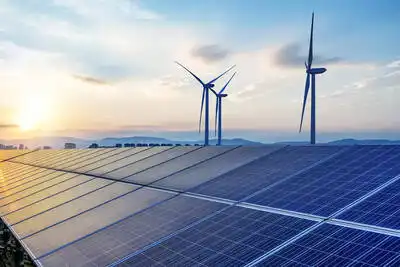Although Assam has an estimated potential of 13,428 MW of rooftop solar (RTS) power generation, it is currently producing a mere 60 MW, officials said.
Officials and experts, however, said efforts were underway to reverse the trend with the state’s Integrated Clean Energy Policy (ICEP) targeting the generation of 1,900 MW of rooftop solar power by 2030, a sharp increase from the 300 MW goal outlined in the Assam Renewable Energy Policy (AREP), 2022.
“Assam is at a pivotal moment in its climate change and energy journey. Fossil fuel dependence isn’t going away soon but we are making a determined push,” Chief Executive Officer (CEO) of (ACCMS) Hirdesh Mishra said.
Assam is one of the most climate-vulnerable states in India and there is an urgent need for a transition to clean, reliable and locally available sources of energy, Mishra, also the Additional Principal Conservator of Forests (Climate Change), said.
Financial access remains a major hurdle and economics drives everything. Rooftop solar power will flourish as costs come down, Mishra added.
The estimated technical potential for RTS ranges between 7,321 MW in a conservative scenario and 13,428 MW under a high-utilisation scenario.
“With strong policy backing, growing consumer interest, and a rapidly evolving vendor ecosystem, the state is well-positioned to scale rooftop solar power across both urban and rural areas,” the IFS officer said.
As part of the state government’s recently announced ICEP, RTS has been categorically structured across three segments — government, commercial and industrial (C&I), and residential.
The responsibility for all three segments has been assigned to the electricity distribution company, (APDCL).
APDCL’s Deputy Manager (New and Renewable Energy) Baishali Talukdar said the state has made substantial progress under the and to date, 20,000 solar installations have been successfully established, aggregating a capacity of around 60 MW.
She pointed out that there are certain key hurdles such as limited consumer awareness, less number of solar vendors with skilled technicians, high upfront costs to be paid by consumers despite subsidies, and prolonged delays in availing loans by interested consumers.
“APDCL is, however, proactively addressing these issues through targeted awareness campaigns, streamlined vendor empanelment processes, and use of digital platforms for faster processing,” she said.
An environmental think-tank, International Forum for Environment, Sustainability and Technology (iFOREST), has conducted research and survey on the prospects of RTS in the state and called for focused interventions on high potential regions and consumer categories.
iFOREST Programme Director Mandvi Singh said that RTS is especially important for Assam because it is a land-neutral technology.
“Our recent project experience has shown that land scarcity and acquisition challenges are significant barriers to large-scale renewable energy deployment in the state. In contrast, the vast untapped rooftop area presents a massive opportunity,” he pointed out.
In fact, harnessing the full potential of the estimated 13,000 MW could power the entire state and create 1.8 lakh direct jobs, Singh said.
“Strategic interventions across policy, finance, and institutional frameworks can help unlock Assam’s full RTS potential, making it a regional leader in solar energy,” he added.
According to the study, a significant share, about 95 per cent of the estimated potential, is distributed across residential and mixed-use buildings.
The urban centres of Kamrup Metropolitan district, particularly Guwahati city, offer the highest RTS potential and in Guwahati alone, the estimated RTS capacity ranges from 625 to 984 MW.
